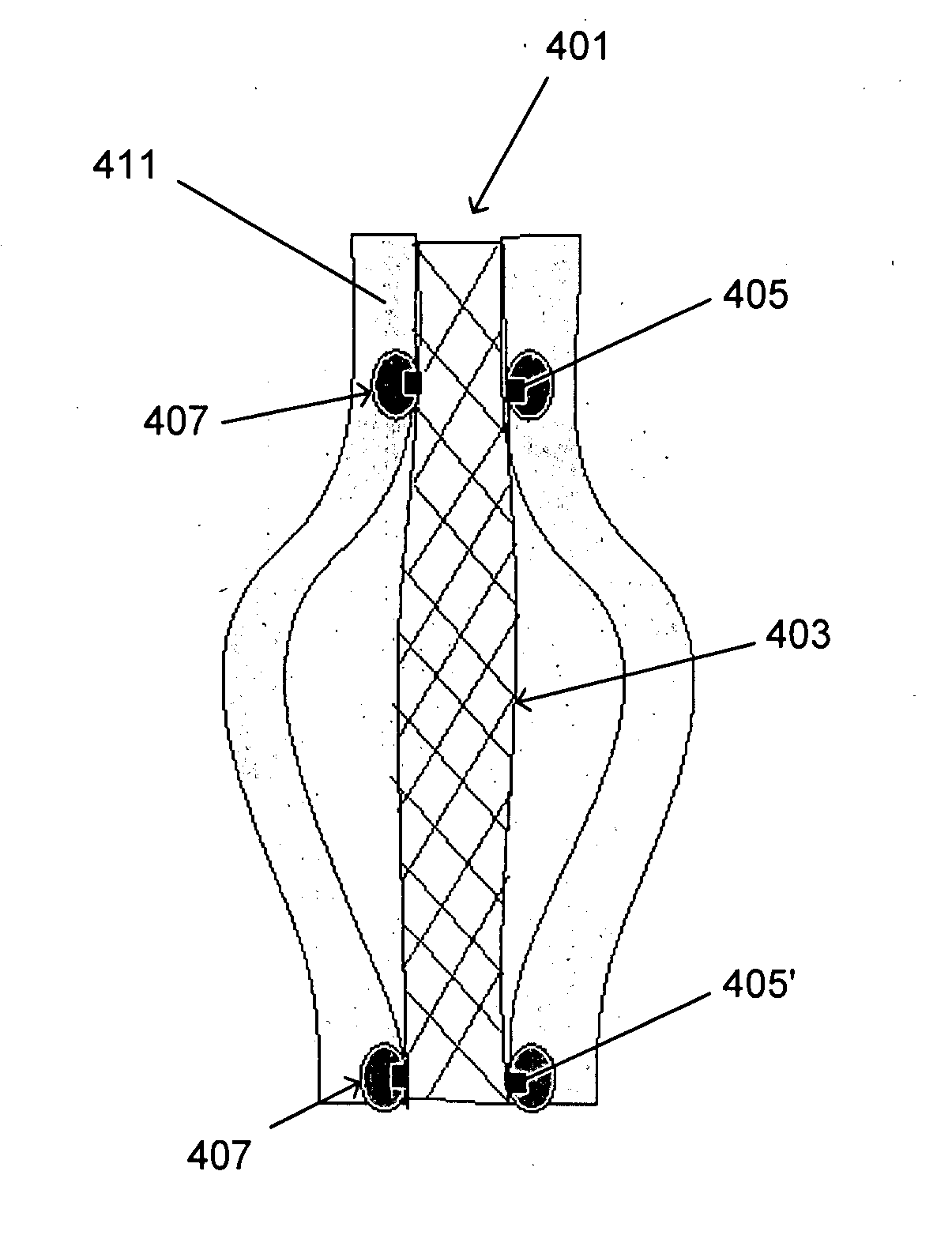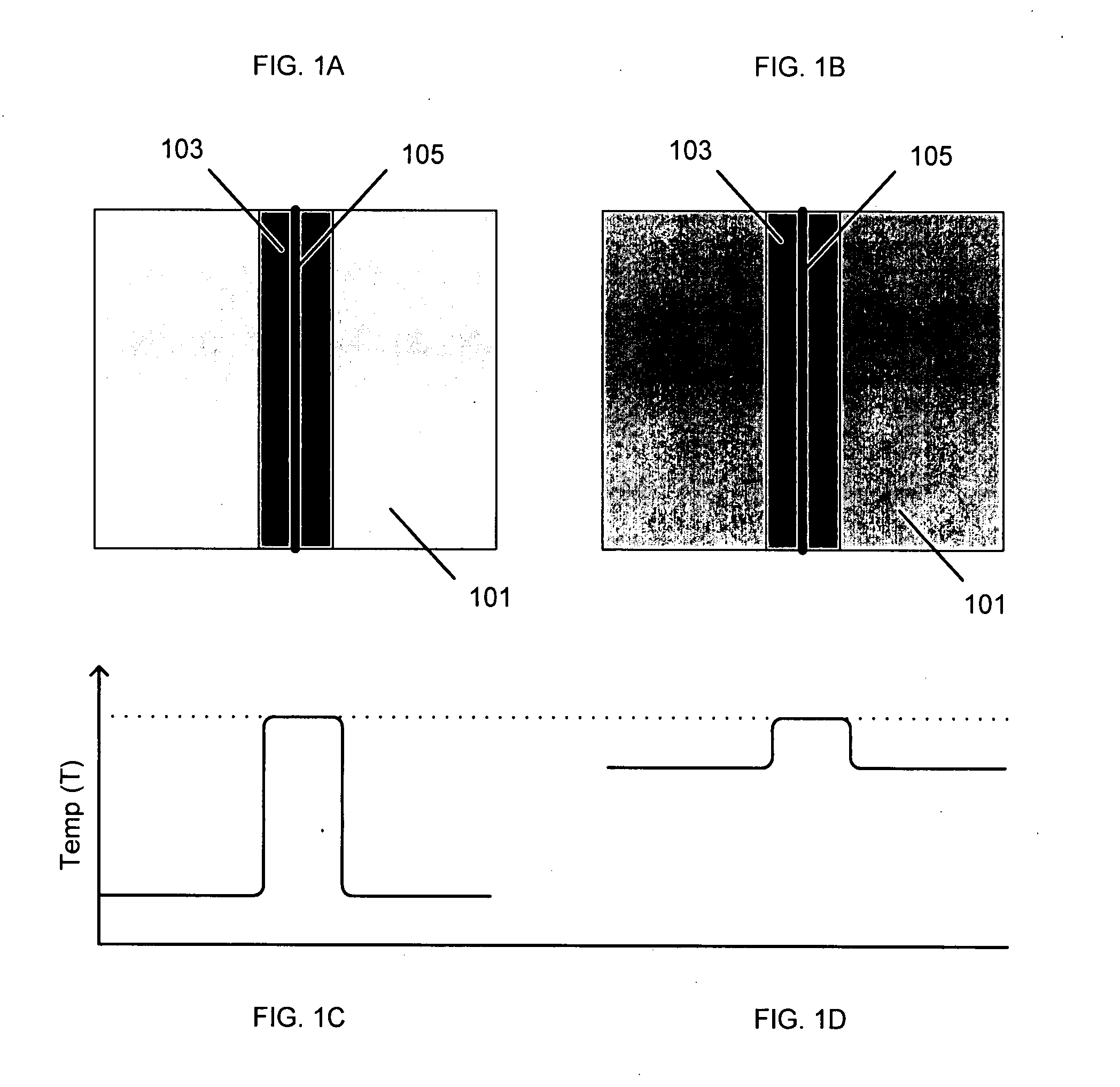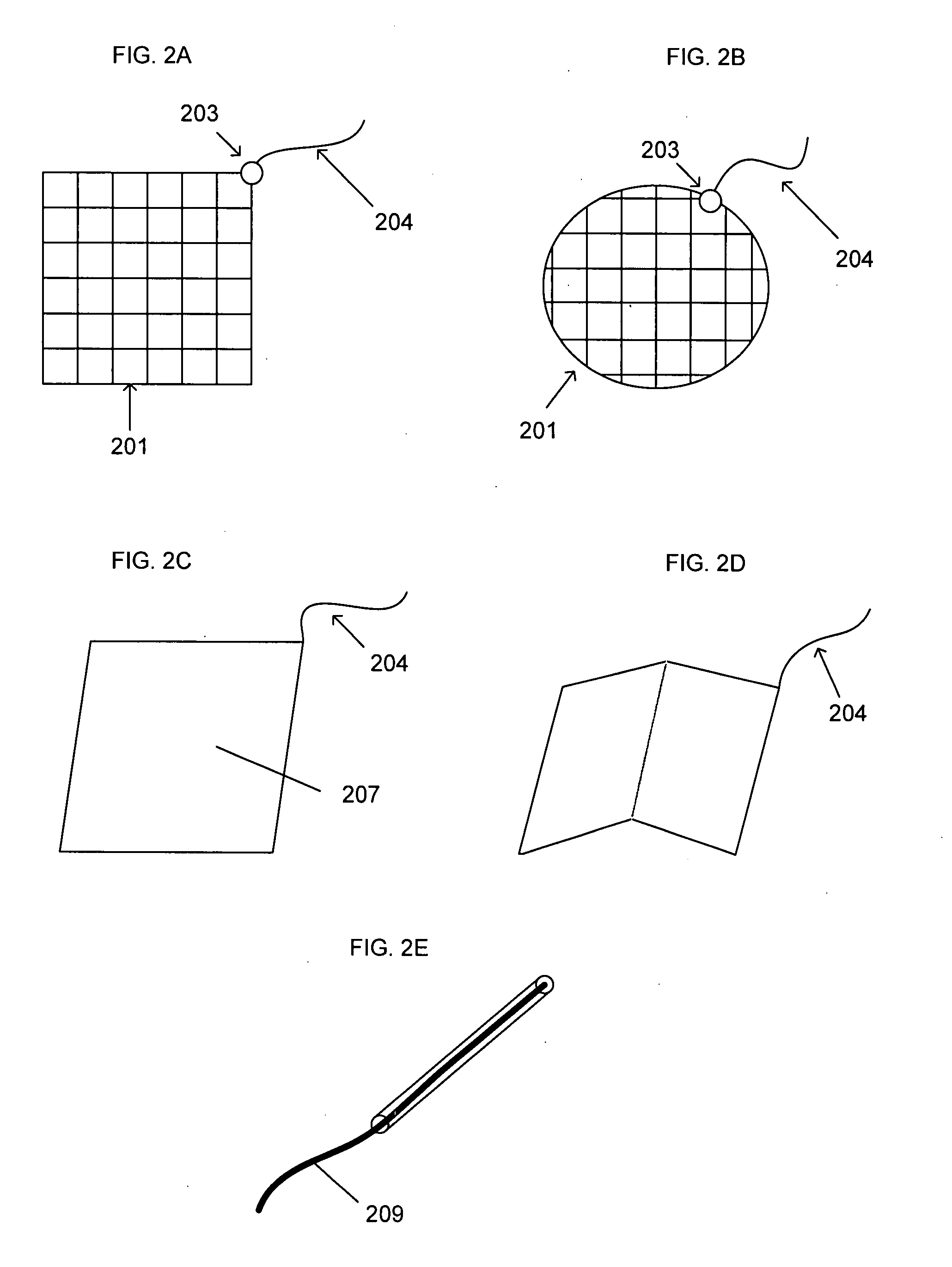Devices and methods for tissue welding
a tissue welding and electrode technology, applied in the field of surgery, can solve problems such as the breakage of the electrically conductive region, and achieve the effect of avoiding overheating adjacent tissu
- Summary
- Abstract
- Description
- Claims
- Application Information
AI Technical Summary
Benefits of technology
Problems solved by technology
Method used
Image
Examples
Embodiment Construction
[0036] Described herein are devices, methods and systems for electrical welding of biological tissue using a thermally crosslinkable (or polymerizable) material. The devices described herein are exemplified by implants that may be inserted into a biological tissue to adhere to the tissue. Implants may be configured as medical devices (e.g., medical implants such as stents, catheters, pacemakers, biosensors, etc.). In some variations, implants are configured for wound closure.
[0037] In general, the implants are configured to adhere to a biological tissue when activated by electrical energy. The implant typically includes one or more electrically conductive structures, and a connector (or connectors) that are releasably connected to the electrically conductive structure. The electrically conductive structure may be used in conjunction with a thermally crosslinkable coating (e.g., a tissue “solder”). In particular, the implant may be coated with a thermally conductive material. Althou...
PUM
 Login to View More
Login to View More Abstract
Description
Claims
Application Information
 Login to View More
Login to View More - R&D
- Intellectual Property
- Life Sciences
- Materials
- Tech Scout
- Unparalleled Data Quality
- Higher Quality Content
- 60% Fewer Hallucinations
Browse by: Latest US Patents, China's latest patents, Technical Efficacy Thesaurus, Application Domain, Technology Topic, Popular Technical Reports.
© 2025 PatSnap. All rights reserved.Legal|Privacy policy|Modern Slavery Act Transparency Statement|Sitemap|About US| Contact US: help@patsnap.com



